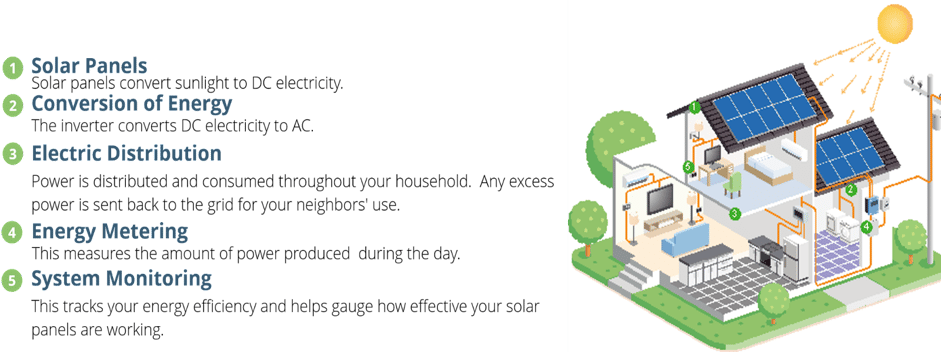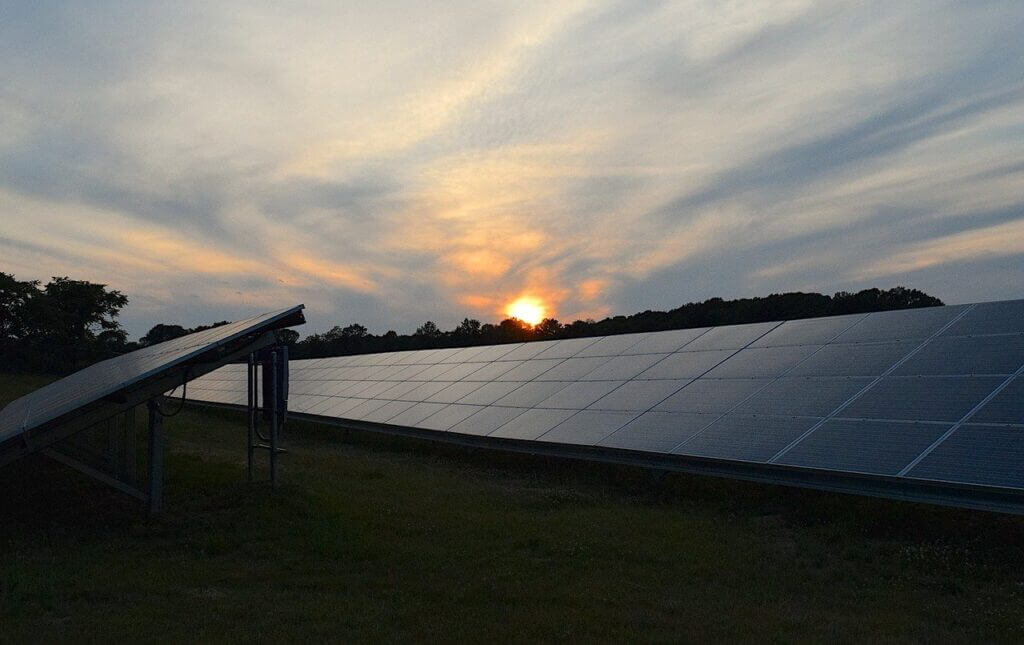It’s time to learn exactly how solar energy works, and it’s simple. Getting educated on the process of going solar can help you make the most informed decision, and that’s our goal!

How do solar panels work? A solar panel is made up of many photovoltaic solar cells connected together. These cells work by allowing photons (packets of energy from the sun) to knock loose electrons from the atoms that make up the cells. Those electrons then flow through attached wires creating voltage (electricity). The more solar cells you have in a solar panel, the more electricity it can generate. The type of electricity generated by solar panels is called direct current (DC). To use the DC electricity to power a home or to send it to the electrical grid, the direct current (DC) must be converted to alternating current (AC) by a component called an inverter.
Net metering: Net metering happens when you use less energy than what your solar system has produced. If that excess power goes back to the grid, rather than to a Storage System (battery),you may receive an energy credit from your electric utility company. These credits can be redeemed to pay for your future energy needs from the grid. If at the end of a year you have unredeemed credits on your electric bill, you could get a check for those credits from your utility company. It’s important to note, not all utilities offer net metering.
Energy Storage Systems (batteries) are normally used as a temporary back-up source or an alternative source of energy for your home. Batteries can provide emergency energy during power outages. Batteries can also be configured to discharge when the solar system is not producing energy, like at night, and during peak consumption or peak utility rate hours.

